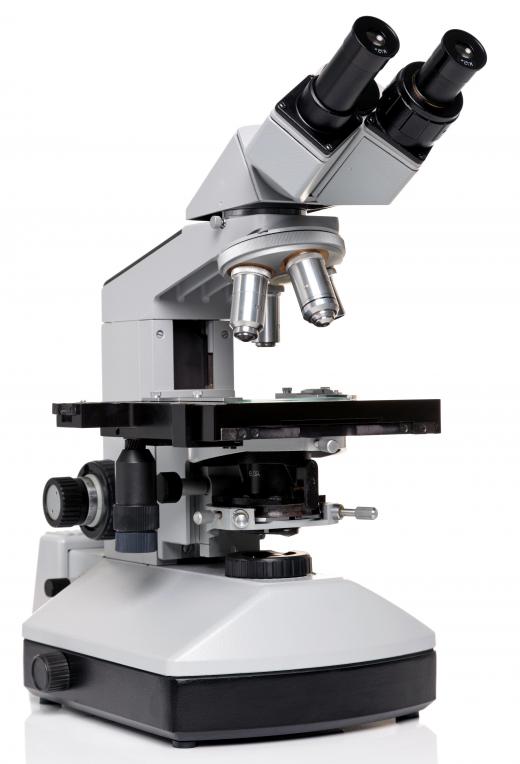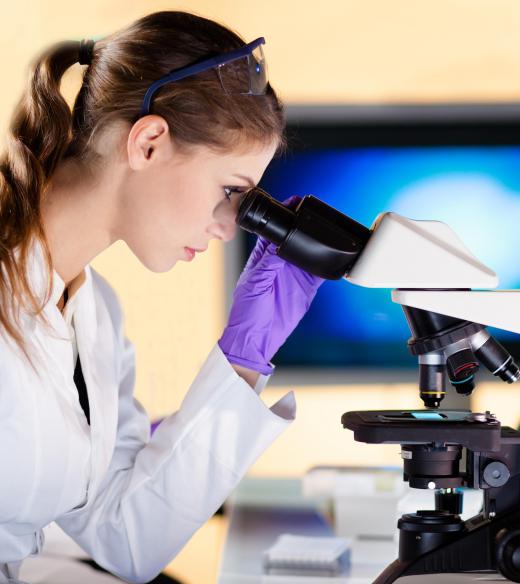What Are the Differences between a Compound and Dissecting Microscope?
There are a few differences between a compound and dissecting microscope. Though each of these tools is used to magnify a subject that is placed on the microscope's stage, the amount of magnification that can be attained varies considerably between these two devices. They are also constructed in different ways, mainly with regards to the objective lenses and the eye pieces.
One of the main differences between a compound and dissecting microscope is the magnification that can be achieved through each of these tools. Compound microscopes are usually able to magnify an object by 400 times, though it is not uncommon to find a compound microscope that can magnify an object by 1,000 times. Dissecting microscopes, on the other hand, usually only magnify an object by 40 times or less.

The reasons for these differences in magnification power also set a compound and dissecting microscope apart from one another. Compound microscopes are generally used to view very small, relatively thin things, such as cells. Dissecting microscopes are used to look at larger objects that have a greater degree of depth, such as grains of pollen. As their name implies, dissecting microscopes are also commonly used to dissect small life forms, such as insects.

Compound and dissecting microscopes also use different lenses. Dissecting microscopes often have only one objective lens that can allow an object to be magnified within a set range of magnifications, such as 10 to 30 or 20 to 40 times. There are three objective lenses on a compound microscope: one that allows the object to be seen at about the same magnification as that of the dissecting microscope, one that magnifies at maximum power, often 400 times, and one in-between. The objectives on a compound microscope are also much closer to the stage than they are on a dissecting microscope. The additional space between the stage and the objective on a dissecting microscopes gives the viewer room to manipulate the subject while examining it.
Another difference between a compound and dissecting microscope is that a dissecting microscope is always made with two eye pieces so that the viewer can look at the subject with both eyes. This allows the subject to be viewed in three dimensions. Compound microscopes, on the other hand, are often made with only one eyepiece. Though there are compound microscopes with two eye pieces, they only allow the viewer to see a thin slice of the subject, even if it is three-dimensional, so a single eye-piece is usually sufficient.
AS FEATURED ON:
AS FEATURED ON:












Discussion Comments
But I guess a compound microscope has only one lens, while the dissecting microscope has two and I think the lenses are probably the most expensive component of a microscope.
It depends on the quality too, of course. They can actually get pretty expensive if you go for anything that's more than a child's toy.
Basically a dissecting microscope is set up so that you'll be able to dissect things well, which means you need to have binocular vision (because it's difficult to determine distance and width if you're only using one eye) and you need to have room for the scalpel.
Not to mention that it's simply impossible for the average someone to dissect something smaller than a certain point, because they won't have tools small enough to manage it. So unless you've got the kind of setup that includes a nano-knife you don't need to have a dissecting microscope that can see smaller areas.
Post your comments